28 Helpful Hacks for Broken Bones
So you broke your knee? Or you fractured your ankle in two or three places? Or maybe you tripped over that annoying bump near your neighbor’s house and broke your hip?
You’ve been to the emergency room, and been treated with pain meds and maybe surgery. You’ve been told you need to refrain from any walking and bearing weight, after which you were handed a pair of awkward crutches by the nice nurse in the ER. She patiently showed you how to navigate those things without making your armpits sore.
Now, you’re in bed, with your foot elevated at a right angle that any geometry student can identify. You know that the fluid building up in your hip or knee or ankle is part of the process. But it hurts. Badly.
Friends are calling you. Family is worried. Everyone wants to help. And all you want to do is stuff yourself with Oxycontin or Oxycodone or Percocet, alternating with Tylenol. And lots of chocolate. And ice cream.
But nothing works – even comfort food – for very long. What should you do?
Enter the “Helpful Hacks for Broken Bones.” It’s the best retail therapy you’ll find outside of any posh hospital over-priced gift shop.
I’m here to tell you that there is life after an orthopedic injury. I personally had several instances where I was laid up in bed for months at a time due to ankle issues. Those details are chronicled in my book, available on Amazon: Best Foot Forward: How a Broken Bone Changed My Life Forever.
Here are the various things you can buy straight from Amazon or anywhere on the Internet to have on hand in your bedroom and home. These items will make your life so much easier while you are recovering. Also, please check out your local Gemach (Jewish free loan service) or your local Bikur Cholim (Jewish Care for the Sick) Society who may have these items for short term – or long term use. Some stores rent some devices as well. Gemachs, in general, exist for many categories, such as baby gear, and other paraphernalia
By the way, some organizations such as Bikur Cholim Ateres Avigayil Society in California, as an example, may also have access to you for rides to doctors and appointments. It is vital that you have a way to get around with local volunteers driving you.
First, a few rules of orthopedic rehabilitation. Think RICE.
R- Rest. You know all about that. Do it. It’s important.
I- Ice the swelling – no more than 15 minutes at a time, several times per day. Check with your doctor or physical therapist when to use ICE and when to use HEAT. There’s an actual science to the matter. Usually ice is used to reduce swelling. Heating pads are for other kinds of pain. This is beyond my skill set, so ask your local doctor or PT.
C- Compression – use compression sleeves or wraps around the knee or ankle, or whatever your doctor suggests.
E – Elevate. Elevate your limb high up on a pillow or foam wedge. Your leg needs to be higher than your heart. So your head is lower down. Sorry, it may not be so comfortable but that’s the only way to reduce the swelling.
- And now… for the 28 tips and hacks:
1. Arnicare Cream for Pain Relief
If your injury is not covered with a cast, you will be allowed to rub cream onto it to soothe the joints. If you do have a cast for a broken bone, you will use this after the cast is removed to ease you into gentle use of the limb without too much pain.
2. Plastic Protective Cover for Cast in Shower
While you have a fiberglass cast on your leg or arm or wherever your bone needs to heal, you will not be allowed to get any moisture on the cast. So when you take a shower, you will need to cover the entire cast with this protective shield or plastic bag of sorts. It works well and all the water from the shower doesn’t land on the cast and cause any disintegration of the material or possible infection.
This will make your ankle feel so much better when it’s aching after the cast is off. Even if you didn’t break your ankle, but perhaps sprained it, this sleeve or sock will fit over your ankle and provide compression for the swelling you may have. When there is injury or trauma, there is swelling from inflammation. The compression sock/sleeve provides a warm tightness to combat the swelling and lessen the pain. Please make sure you get the right size. You need to follow the size charts on the websites to make sure you get the proper fit whether it is small, medium, large or extra large. I used this sleeve for the weeks and months post cast, when I was ambulating already and needed to control the swelling that cropped up every so often. There are many types of sleeves for compression. Read the reviews and pick the one that appeals to you the most. They’re all good, it’s just a matter of taste which one will work for you.
4. Shower Chair
You may be able to borrow this from a friend or a local free-loan service. I borrowed mine from a friend. For the entire recovery period you will need to sit in a chair while taking a shower. It won’t be possible to stand on one leg obviously. And did I mention that for the duration of the casting period (mostly with ankle injuries), you will not be allowed to bear weight on the ankle?
5. Grab Bars for Shower and Bathroom
This is essential for after an injury or even for anyone elderly with poor balance who are a “fall risk.” Have a handyman screw this into the wall near the toilet area, inside the shower and also on the wall of the bathtub. You will need it to hold onto when getting in and out of these areas. We also put on on the outside wall of our patio to grab onto when walking down the little step into the driveway. People often miss that step and trip. The grab bar reminds them to hold on.
6. Knee Rider or Knee Rover – AKA Scooter!
Welcome to the Cadillac for ankle injury patients. When you are told by your doctor that you are to be non-weight-bearing for 12 weeks, this will be your go-to item. This apparatus is for getting around your home and around town. Simply put your knee on the seat cushion and scoot around with the other foot. By the way when sitting on a couch, the seat could double as a resting place for the foot. Also, the seat can double as a desk for placing a laptop when typing blogs about orthopedic Amazon items. (just theoretically).
7. Walker
These walkers are for holding onto when walking and needing support. Someone with any injury of the lower limbs will need this when beginning to ambulate. I personally did not use this that much as I used my crutch/cane when beginning to ambulate. But many people find this to be useful especially with hip and knee rehabilitation. The walkers come in fancy styles like the one pictured here, and in simple basic styles. The fancy styles have a seat to sit down and fancy leather trim. The plain one just has resting bars for the patient’s hand.
8. Crutches
Before scooters or knee-riders were invented, people used two crutches to move around as one foot walked/skipped forward, and the other foot was held above ground bent at the knee. Some people find the coordination difficult and opt for the scooter (see above). But for those who use this crutches, it can be very helpful. I personally used it after my cast was removed and I needed to learn how to walk again. I was insecure walking without support so I used one crutch on the opposite side of my painful ankle. I learned how to walk this way and later was able to do so without the crutch. Yay! Note of caution – make sure the crutch is adjusted to your height and body proportion. I had my physical therapist adjust it for me, making it much easier to use.
9. Tylenol – general guidelines
My doctor recommended tylenol over Advil for my recovery period. I was told that Advil is not helpful for bone healing. And so I used the Tyelenol (Acetiminophin) as needed. Usually 3 times in 24 hours maximum. Follow your doctor or practitioner’s advice here. My suggestions are merely suggestions and what I was instructed in my case. Tylenol comes in Extra Strength or Regular.
10. Other Opioids – general guidelines
When taking these prescribed medications, be sure to take them on schedule and as prescribed. Do not wait until the pain gets so bad, that the medication won’t have a swift effect. The trick is to be ahead of the pain, rather than chasing the pain relief. This means that if it’s already four hours since the last time you’ve had your medicine, take the next dosage even if the pain is not so intense yet.
Opioids are a class of drugs that include the illegal drug heroin, synthetic opioids such as fentanyl, and pain relievers available legally by prescription, such as oxycodone (OxyContin®), hydrocodone (Vicodin®), codeine, morphine, and many others. Discuss this with your doctor for your particular case. Whenever going off medications, ask your doctor for guidelines in weaning. Do not stop them aburptly.
Some ramps are suitable for wheelchairs as they are meant for a person to wheel the patient. These can be ordered on Amazon and set up on outside stairs of home, or perhaps from a van to the driveway.
12. Ramp with Handrails for Self-using Scooter
This ramp is suitable for someone who wheels themselves using a scooter. It has handrails to hold onto while going up or down. The slope is very important and whoever installs it has to keep in mind to make it long enough and not steep so that it’s safe to use. Imagine a short and very steep incline – not so good. Do the research. Some order them pre-made from the internet. Others have them custom built for the home.
13. Ramp with or without handrails
Read here about the comparison and protocol for ramps with and without handrails. The Americans With Disabilities Act has certain specifications for what is required. I personally have a ramp that’s made out of wood rather than metal because I found the metal ones cumbersome to ride on with my scooter. Wood seemed safer for me. I also like having handrails for extra safety. But that’s because my ramp is very long and not so steep. I’ve seen short ramps that are used by wheelchair users as someone else wheels them. These do not need handrails, because the patient is being wheeled.
I used a wooden ramp for my threshold at front door, but mine was longer than this one and had handrails. Mine was custom made because I could not find any like it online. Do your own research and decide what works best for your case, whether you are using a wheelchair, scooter, or not any kind of assistive device but you just want to eliminate steps.
15. Foam Wedge for Leg Elevation
Say good-bye to piles of pillows that fall off the bed in middle of the night. Say hello to the many wedges that are on the market. They’re all good. You just have to like the one you use. Mine was less fancy than the one pictured here. But it worked for me.
Breakfast in bed never tasted so good. Try this tray and you’ll feel so pampered while sitting in bed and eating your prepared meal. Enjoy!
Do all your laptop work and write your next novel right from your bed, using this fancy shmancy tray that has legs and all sorts of doo-dads on it. Again, there are many things on the market. None will meet all your requirements. It’s all very personal, and you’ll have to shop around for what works best for you.
After trauma to the joints and bones, people struggle with lymphedema which is swelling or fluid that builds up in the lymph nodes. I don’t know a lot about this, even though I personally do struggle with moderate swelling. However, I know some people who have had this condition and they gained relief through special socks. Check these socks out. They’re better than pantyhose because easier to take off and on especially.
19. Knee High Socks
I found that during my time with the cast or splint on my leg, I needed to use knee-high socks rather than pantyhose. These socks were comfortable, soft and of high quality. Shop around for the best fabric that works for you. Mine were not particularly compression socks but they were soft and comfy and stayed pulled up. I got them in black and beige. I wore long skirts to cover my legs and felt very fashionable.
20. Support Surgical Pantyhose
I literally never knew these existed until I had my own experience with ankle injury. After my first successful surgery when I was recuperating, I used these pantyhose. I got a “prescription” from my doctor about the particular compression level I needed and size level. I would never have known without his guidance. Then I was able to call up the surgical store and order these lovely pantyhose for my use. They last for a long time. They are strong and comfortable and provide support. After the initial period of using socks when getting dressed and undressed a lot, I wanted to have more complete support of pantyhose.
21. Cushioned pad for scooter seat.
The scooter seats can be hard or rough on the knee, and so you need a special cushion that is soft fluffy. It does gather dust and dirt into their area, but it’s machine washable.
22. I-Crutch – hands free crutch for injured leg
Check out this somewhat new invention which is a substitute to the standard knee rider scooter or crutches. Imagine the contraption attached to your leg with your leg in a bent position and resting on platform of sorts. See picture in link right above. Many people enjoy this item and others find that it has drawbacks. When I read about it online, I contemplated ordering it so I can navigate stairs. For me, it was too awkward, and I stuck to my scooter. But hey, ya never know. You may like it. Give it a try…
23. Weighted Blanket
This blanket was a lifesaver. I used it every night no matter the weather because it provided me with comfort and security as it sits heavily on top of my regular blanket and provides a cozy feeling. Apparently, these are popular and even more so for me because when I was at home for so many weeks, I wanted to get good sleep. Sleep helped me heal. Shop around for the one that suits you the most. The one pictured on the aforementioned link is quite pricey. Not all are so expensive.
24. Sponge set for Sponge baths
This set proved to be invaluable for the many weeks that I was instructed not to bear weight, not to walk, not to take a shower or bath, and not to get the cast area wet. It was challenging. So I washed my hair in the hm
26. Daily Gratitude Journal
and Notepad for tracking medicine dosages. You may want to write insights you thought of during your recuperation as well as times you took pain meds and other post surgery medicine.
27. Tip for painful or achy ankles: Let some warm water from the shower run onto your ankle and leg for about 45 seconds. Then place the leg into a bucket of cool water with ice for 45 seconds. Alternate between the two and after several minutes you will feel amazing. Advice from Dr. Glenn Pfeffer, my orthopedist.
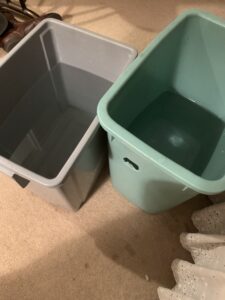
You will need this at your bedside, along with other favorite books to read and peruse. Whenever you feel down, simply take out your prayer book and ask Hashem to cure you and relieve you from pain.
28. Steve Madden High top Boots
Beautiful combat boots that come in brown or black, with a zipper and laced tie for comfortable and secure ankle support
Disclaimer: This post is not to be construed as medical advice. These are merely suggestions and recommendations from this blogger about products and ideas that worked for her situation. Please check with your own doctor, nurse, or practitioner for exact professional specific advice.
May all be healed from all ailments. Amen.
This post is dedicated to the speedy recovery of Miriam bat Chava Frumit and all those struggling with orthopedic injuries and arthritis.

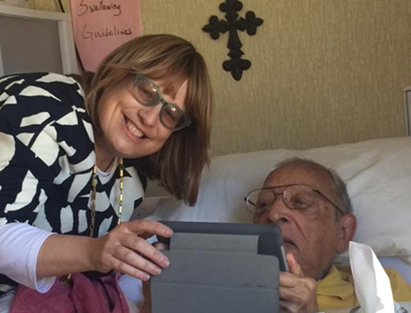
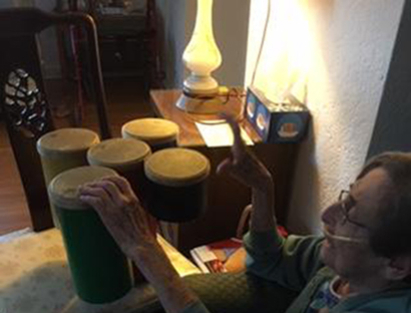



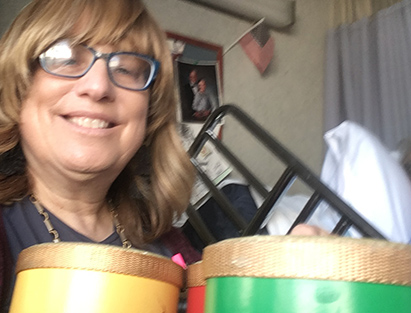

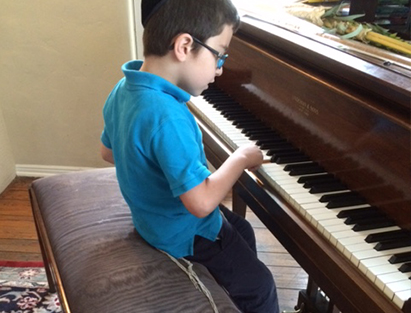



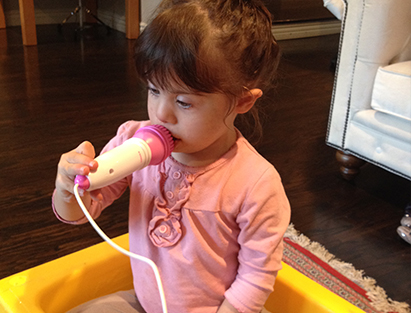

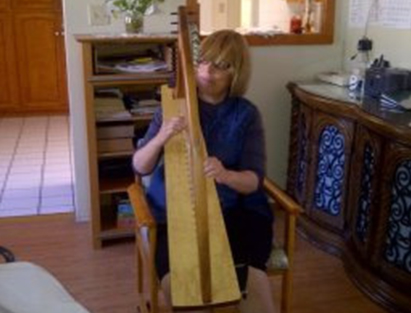



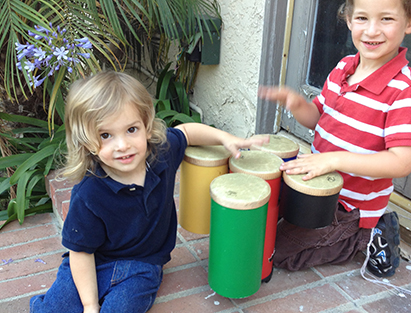

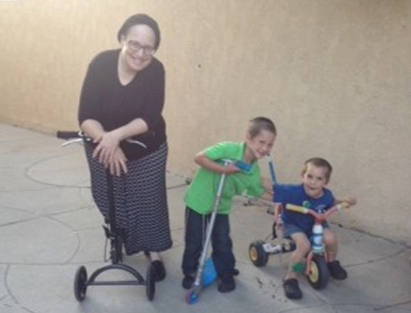
Thank you for this comprehensive list, Miriam. You have things here that I wouldn’t have thought of.
I love how you have turned your own difficult ‘nisayon’ into a positive way to help others learn something important from you. That’s what makes you an amazing person and friend! I’m always inspired and awed by you, Em!